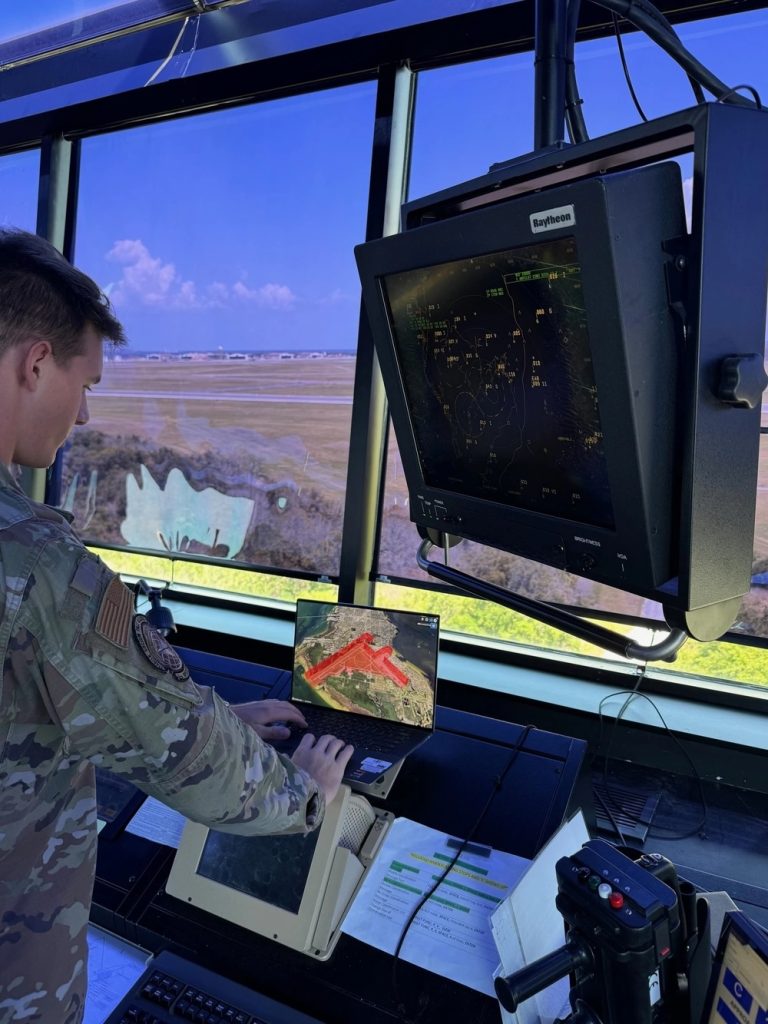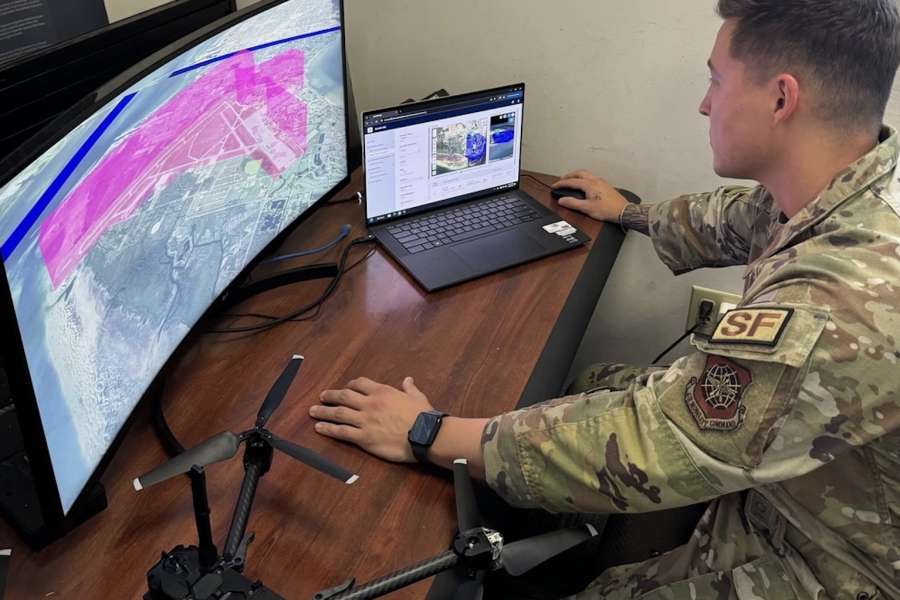The Air Force achieved a milestone in May by testing out a new tool for controlling high volumes of small unmanned aircraft systems (sUAS) in military airspace. The new system is part of a larger government, military, and industry effort to develop Unmanned Aircraft Systems Traffic Management (UTM) systems as the number of small drones for public and private use explodes.
In the near future, the skies may be crowded with small drones delivering packages, inspecting infrastructure, responding to 9-1-1 calls, ferrying passengers, and other tasks at a scale that current air traffic control systems just can’t handle.
“We are expecting millions of drones and their operations in a day, which is a magnitude order different than what happens with current aviation where there are 50,000 aircraft, and [only] about 6,000 at peak in the sky,” Dr. Parimal Kopardekar, director of NASA Aeronautics Research Institute, said in a 2021 NASA video about UTM.
“The question is, how do we manage these millions of drones without burdening the current air traffic control system?” he said.

Current ATC systems rely on human controllers who see the entire picture of the local airspace talking voice-to-voice with human pilots who do not. By contrast, UTMs rely on drones sharing information with each other to create a common picture that is automatically updated to show each drone’s flight plan.
“That allows [drones] … to figure out a path that will avoid other vehicles in the sky,” Kopardekar explained.
The goal is to bring order to what could otherwise be a chaotic situation: the NASA video alluded to city streets before the invention of road rules, when automobiles, pedestrians, and horse-drawn carriages competing for space led to “general mayhem ruling the day.”
While UTM has applications in the civilian world, MacDill Air Force Base, Fla., became the first Air Force base to use the technology in military airspace, according to a July 12 press release. This specific system is called the Collaborative Low-Altitude Unmanned Aircraft System Integration Effort (CLUE).

The CLUE UTM was developed by the Air Force Research Laboratory to prepare airfield managers, Security Forces Airmen, civil engineers, and other fields for ensuring safe UAS traffic overhead. MacDill first tested out the system in 2022, but it needed refining. Two years later, the system “began formal operational feasibility assessment activities,” according to the press release. The tests mark a major milestone because it is the first UTM system that the Air Force will operationally assess, Phil Zaleski, AFRL CLUE program manager, said in the release.
In the test, UAS operators asked CLUE for permission to fly the drones, and if their request was granted, operators could fly within an allowed area. CLUE updated the operators with new information and warned them if the drones went beyond approved conditions, the release explained. The network also integrated with a range of sensors, including a counter-UAS system, to detect, track, and identify small drones.
It was not clear what the results of the test were, but overall, the system cuts down on “lengthy, manual and advanced planning procedures,” which “will be critical to achieving real-time flight planning and mission execution,” James Layton, MacDill’s chief of plans and programs, said in the release.
